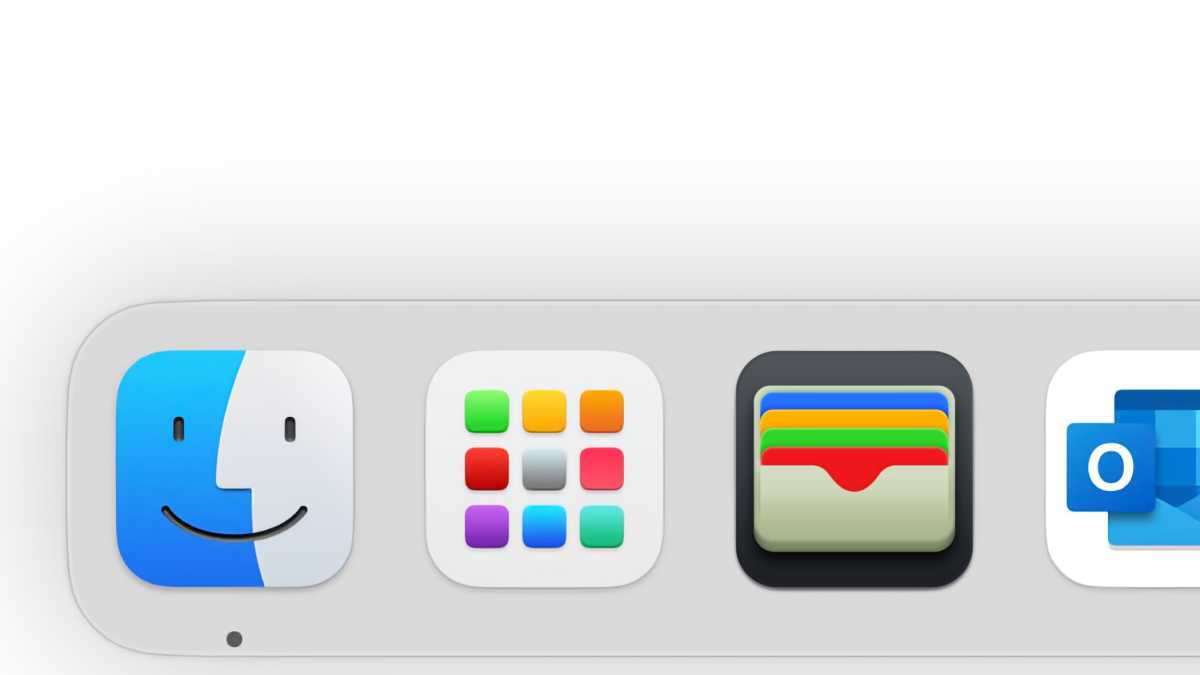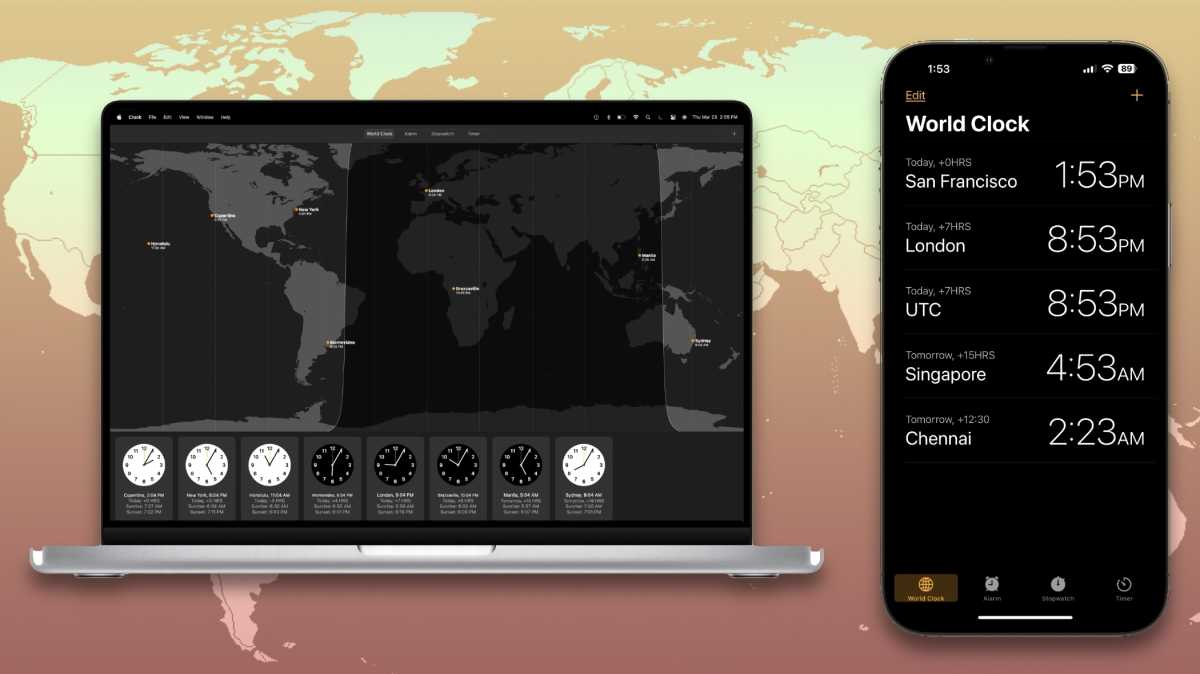Apple’s WWDC is coming in June, and that’s when we expect the company to take the wraps off of macOS 14, the next major version of the Mac operating system. In this article, we’ll track the latest news about macOS 14, and when it is officially unveiled, it’ll be your place to learn about all of the new features and updates.
macOS 14: What will be the name of the next macOS release?
Every year since macOS 10.9 Mavericks, Apple has used California landmarks to identify each new version of macOS. Apple has trademarked numerous names over the years, as shared by Parker Ortolani of The Verge:
If macOS 14 is a so-called maintenance release with few new features, it will likely be named after a location near Ventura. Based on the names above, Rincon and Skyline are the most likely names.
macOS 14 release date: When will macOS 14 arrive?
Apple’s usual venue for revealing the next major version of macOS is its Worldwide Developers Conference. WWDC 2023 starts on June 5, and during the keynote, Apple will reveal the name and new features of macOS.
Apple usually releases a beta of the new macOS to developers at WWDC, and you have to be a registered developer to access it. A public beta is released about a month later, and in order to get that, you must join Apple’s Beta Program.
The final version of macOS 14 will be released to the general public in the fall. In the recent past, the release has come several weeks after the new version of iOS ships. Here are the release dates for the previous five versions of macOS:
- macOS 13 Ventura: October 24, 2022
- macOS 12 Monterey: October 25, 2021
- macOS 11 Big Sur: November 12, 2020
- macOS 10.15 Catalina: October 7, 2019
- macOS 10.14 Mojave: September 24, 2018
This is what the release timeline could look like:
- June 5: macOS 14 is revealed and the developer beta is released.
- July: Apple releases the first public beta.
- June to September/October: This is the beta period. Apple will release several beta updates during this time.
- September/October: macOS 14 is released to the general public.
macOS 14 compatibility: Which Macs will be able to run macOS 14?
When Apple released macOS Ventura, the company cut numerous older Macs from the compatibility list, including:
- 2015 iMac
- 2016 MacBook
- 2015-2017 MacBook Air
- 2015-2016 MacBook Pro
- 2014 Mac mini
- 2013 Mac Pro
There haven’t been any rumors about Apple dropping support for any Macs this year like we have with the iPad, so it’s very possible that the compatibility list for macOS 14 is the same as Ventura. Here’s the possible compatibility list:
- MacBook models from 2017 or later
- MacBook Air models from 2018 or later
- MacBook Pro models from 2017 or later
- Mac mini models from 2018 or later
- iMac models from 2017 or later
- iMac Pro (all models)
- Mac Pro models from 2019 or later
- Mac Studio (all models)
There is always the possibility that a Mac may be compatible with macOS 14, but some of the new features won’t run on older Macs of the list. Some new features may also require Apple chips and not run on Intel-based Macs.
macOS 14: How to install the beta and official version
Apple is changing the beta process in macOS 13.4, so by the time the macOS 14 beta arrives, the method will be different. Instead of downloading the Beta Access Utility for every device, you’ll only need to register your Apple ID for the beta program to install betas on every Apple device that is signed into that account.
Then when you go to Software Update, you’ll see a new tab for Beta Updates, which will list the version of the beta you’re running. If you want to install the beta, select macOS 14 Public Beta, and if you want to return to Ventura, select Off. To install the official version, you need to wait for Apple to start shipping it in the fall. Then, you’ll be able to use Software Update in System Settings, or you can download it from the App Store.
Just remember: betas are not as stable as the official version–features may be implemented and then withdrawn, or they may not work properly, UI can change, and third-party app compatibility isn’t guaranteed.
macOS 14: Rumored new features
Rumors about new features have been light—all we know so far is that macOS 14 is not expected to be a major release loaded with new features. Bloomberg’s Mark Gurman reports that it likely won’t be “groundbreaking or significant” but rather will continue the trend of adding iOS features. As he writes: “The dream scenario is that you own an Apple Watch, an iPhone, a MacBook, an iPad, an Apple headset, and all five of those devices are capable of doing all the same things just in different use cases and at different times of the day.”
It’s also been reported that Apple has shifted some macOS resources to xrOS as Apple prepares to launch its new AR headset at WWDC.
macOS 14: New features we want to see
Even if macOS 14 consists entirely of iOS features that make their way to the Mac, there are plenty we’d like to see.
Dynamic Island for the Mac
With the iPhone 14 Pro, Apple introduced the Dynamic Island, which uses the pill-shaped cutout for Face ID and the selfie camera as an extraordinary UI element. It’s an ingenious feature that needs to at least come to the MacBook Pro.
Dynamic Island would alleviate the clutter on the right side of the macOS interface, which houses notifications, reminders, and widgets. But it could also be a great way to monitor the progress of something an app is working on in the background, act as an indicator for battery life, or display what Apple Music is playing, as on the iPhone.
Besides, Apple’s 14- and 16-inch MacBook Pro and the M2 MacBook Air already have display notches, so a trip to the Dynamic Island should be easy to book.

Apple could make a lot of money by offering cloud storage for Time Machine backups.
Foundry
Time Machine iCloud backups
This was on our wishlist for macOS 12 and macOS 13, and it’s going to stay on every wishlist until it happens. As I said before, I’ll say it again: Having an offsite backup is always a good idea, and Time Machine could be updated to do that along with the option for a local backup.
Since Apple doesn’t seem to be interested in adding this feature to macOS out of necessity, allow me to take a different angle: It’s good for Apple’s bottom line. Think about it, Apple. You could make precious Services money from Time Machine iCloud backups by selling iCloud+ storage. Apple already has a $9.99/£6.99 tier that offers 2TB of storage— and I could see a new $6.99/£3.99 for 1TB of Time Machine iCloud+ storage tier. That’s about $84/£48 per year, and say, 500,000 users sign up for that. That’s a lot of money you’re making each year and a lot of happy Mac customers. How can you pass that up, Apple?
Fine-tune System Settings
In my macOS 13 wishlist, I wanted Apple to rename System Preferences to Settings to match iOS and iPadOS. My wish came true, but at a price: Apple took it a step further and redesigned the UI to be more like the iPhone. That caused consternation for the most hard-core Mac fans and confusion among even iPhone users–and sent a lot of Mac users to Google to find settings they thought were lost. There’s no going back now; System Settings and its UI are here to stay. But it could use some fine-tuning.
We’d love to see Apple separate the interface from iOS. The look is fine, but some settings don’t make sense tucked away behind General or Desktop & Dock. Top on the list: Time Machine (especially if Apple unlocks iCloud backups).
More Apple iOS apps
With macOS Ventura, Apple finally made Mac versions of the Clock and Weather apps that have been in iOS since forever. Why stop there? There are plenty of iOS apps that aren’t available on the Mac: Translate, Clips (which was on my macOS 13 wishlist), Health, Wallet (those two were on my macOS 12 wishlist), Support…maybe not Compass, Measure, and Magnifier. And hey, while they’re at it, revive Warren Buffet’s Paper Wizard and bring it to the Mac!

More iOS apps, such as Wallet, should come to macOS.
Foundry
Sync the Clock app across all devices
As I just said, with macOS Ventura, Apple finally brought over Mac versions of the Clock and Weather apps that have been in iOS and iPadOS. Yay! However, the Weather app syncs between devices, and the Clock app doesn’t. That means that alarms that you set on one device aren’t available on others. Boo!
It’s easy enough to set an alarm, but it would be way easier if those alarms synced across devices. While we’re at it, why not sync world clock entries? Or even timers–I create a lot of timers and would like to be able to control them from multiple devices. Oh, and since everyone might not want their iPhone timers on their Mac, then give us the option to turn syncing off.

The Clock app arrived with macOS Ventura, but it doesn’t sync with the Clock app on iPhones and iPads.
Foundry
Stability and optimization
I can keep going with the wishes–a lot of what I wanted in my macOS 12 and macOS 13 wishlist have yet to become reality, and I’d still like to see them happen. But reports have said that macOS 14 won’t have many major changes, since the company is supposedly focusing on the AR/VR headset and its operating system, rumored to be called xrOS. Development for macOS 14, iOS 17, and iPadOS 17 (see, wouldn’t it be easier to read if they had the same version number?) is seemingly a lower priority until that device is unveiled.




